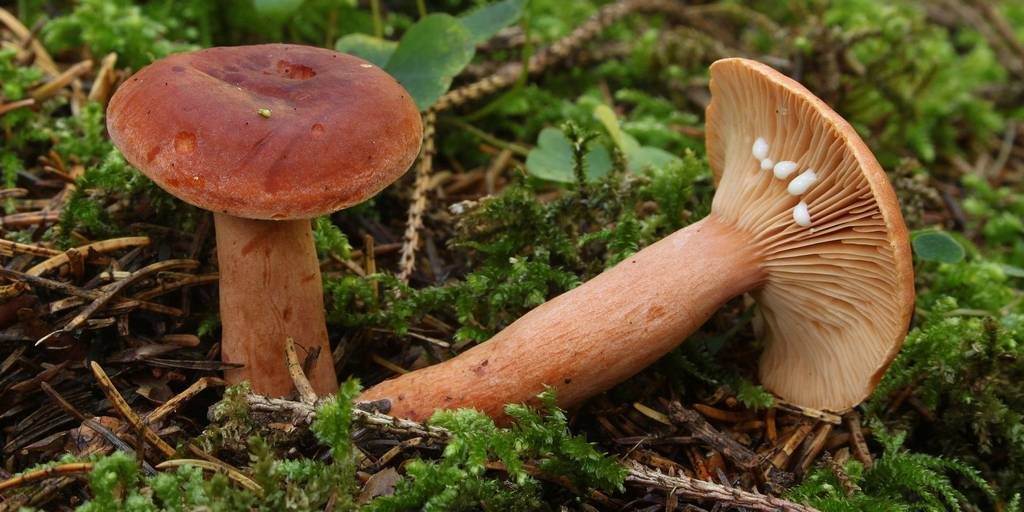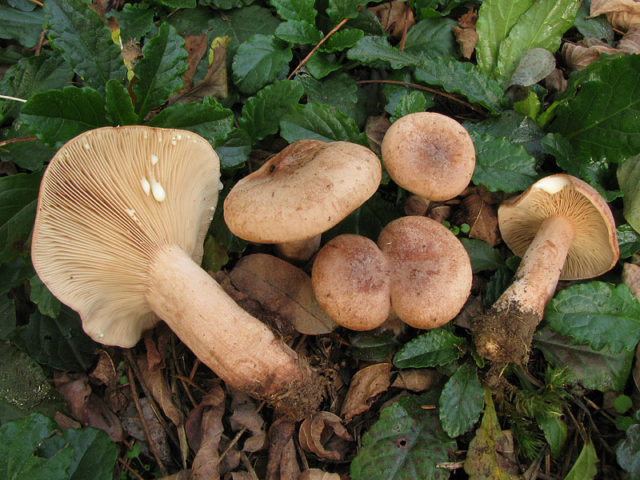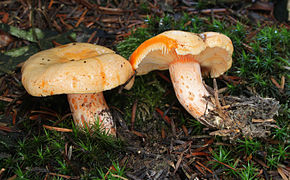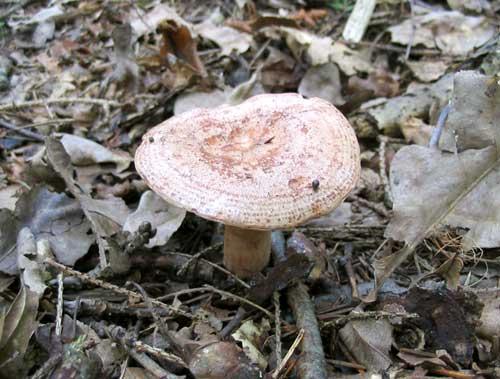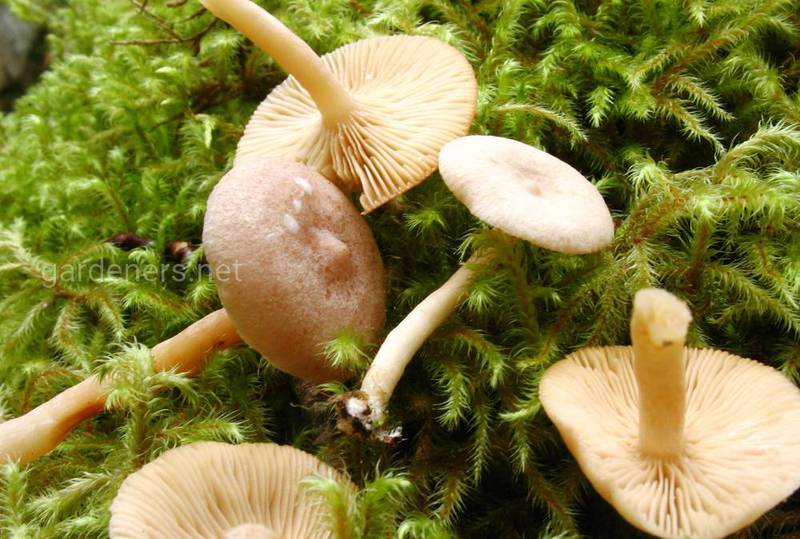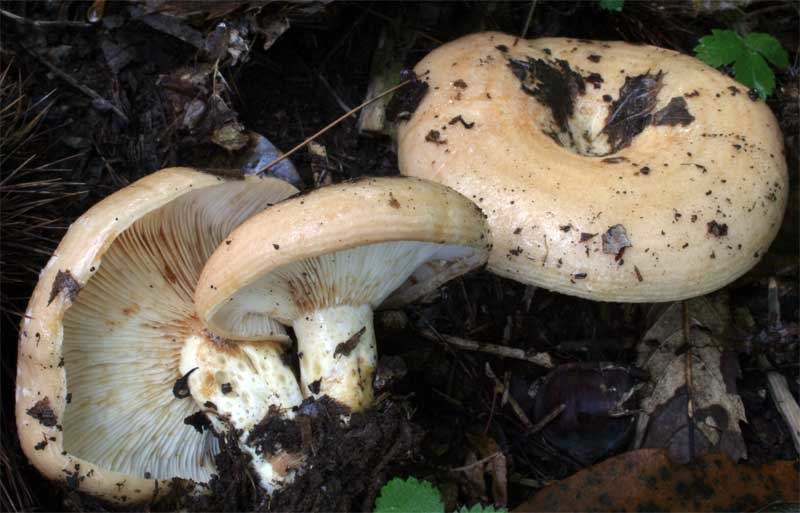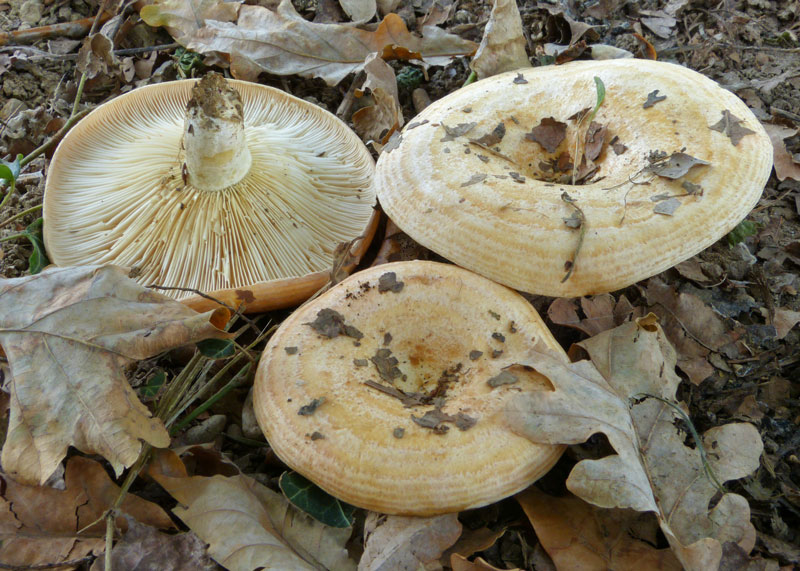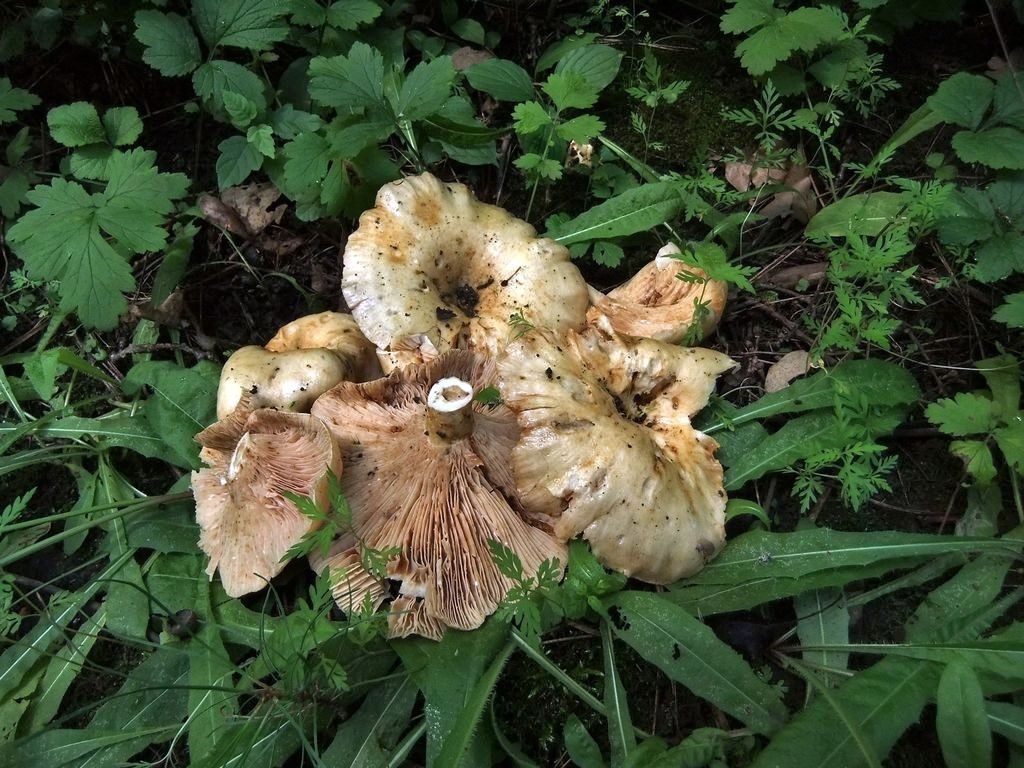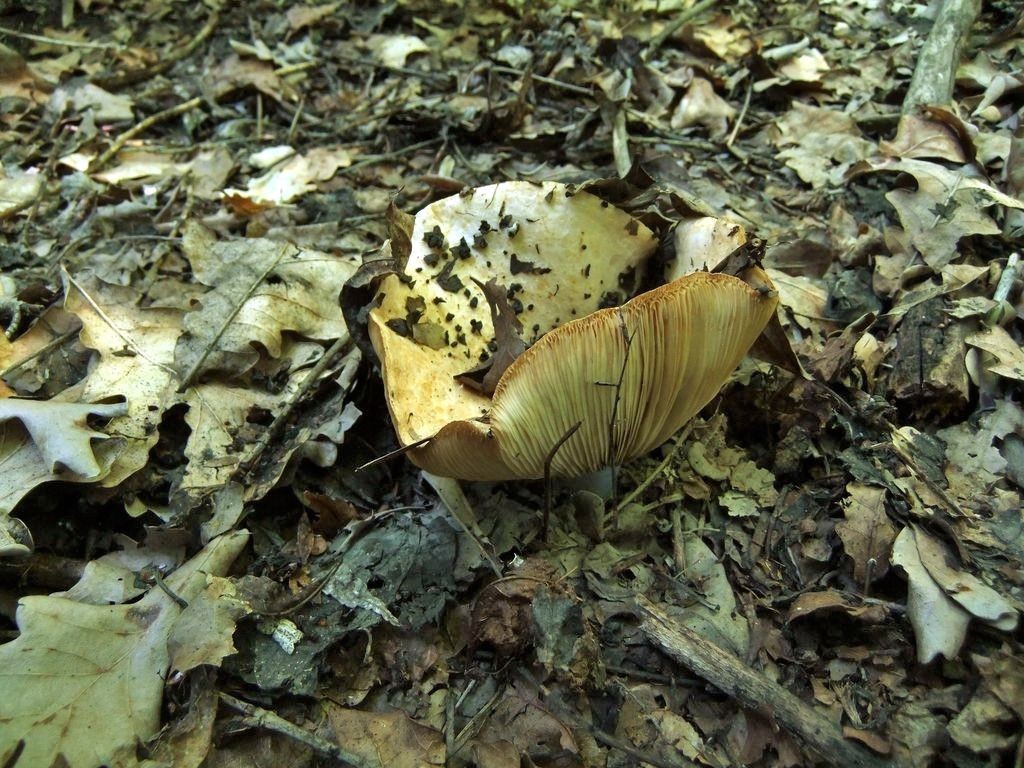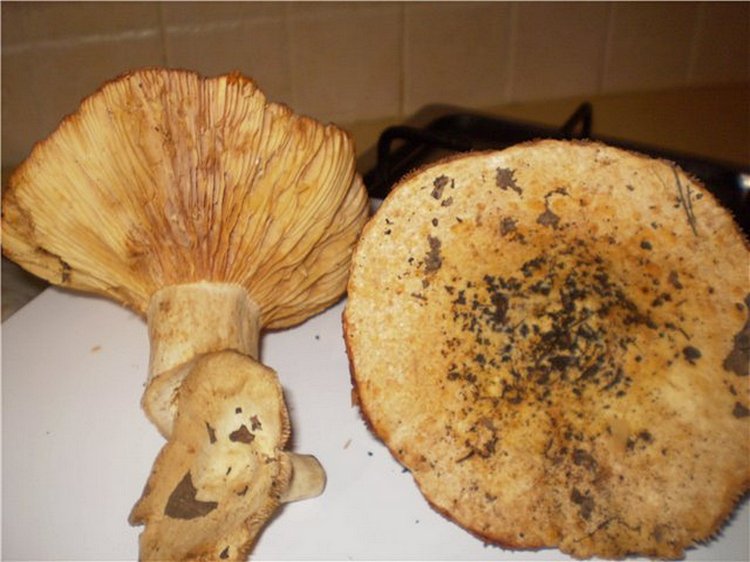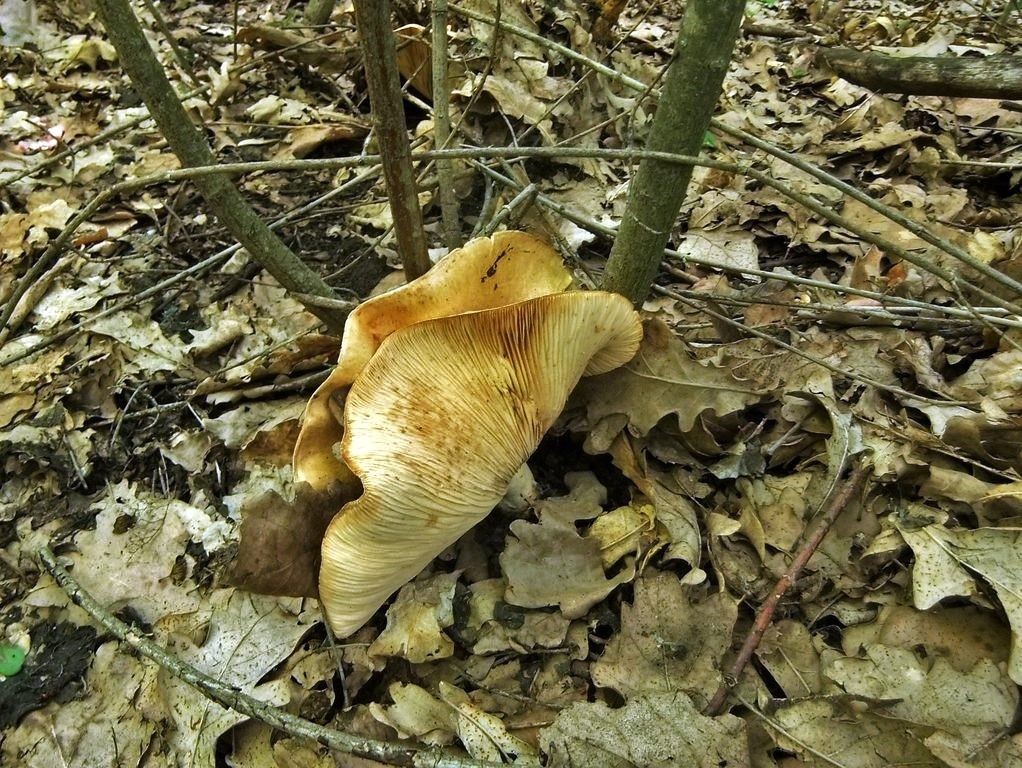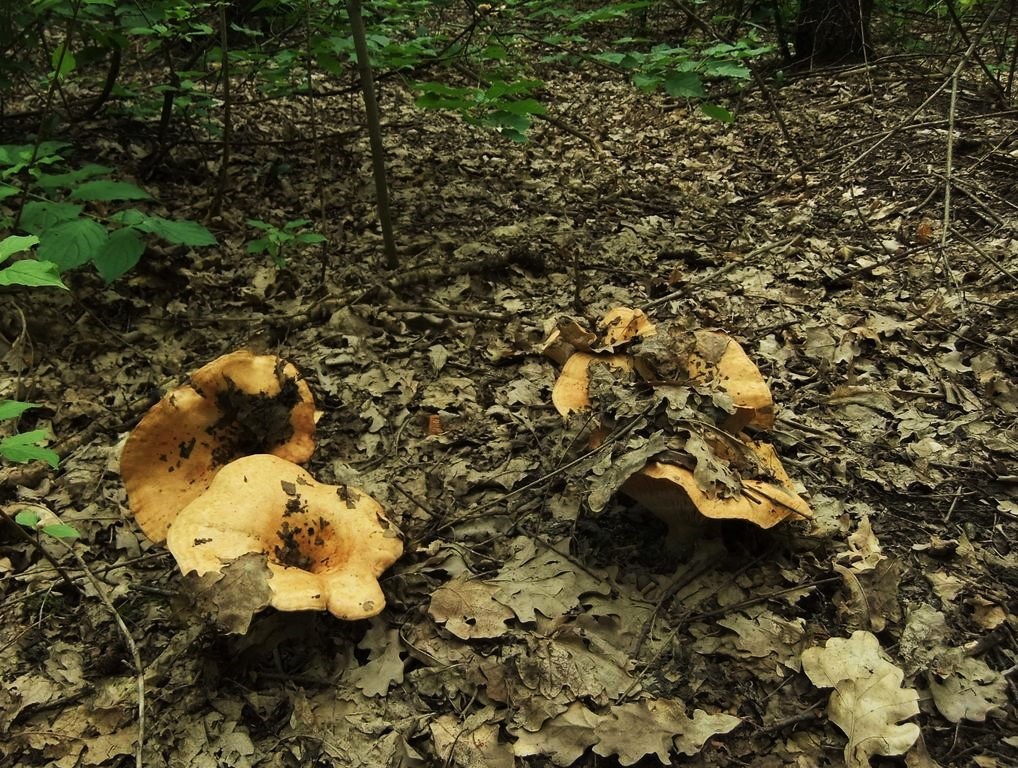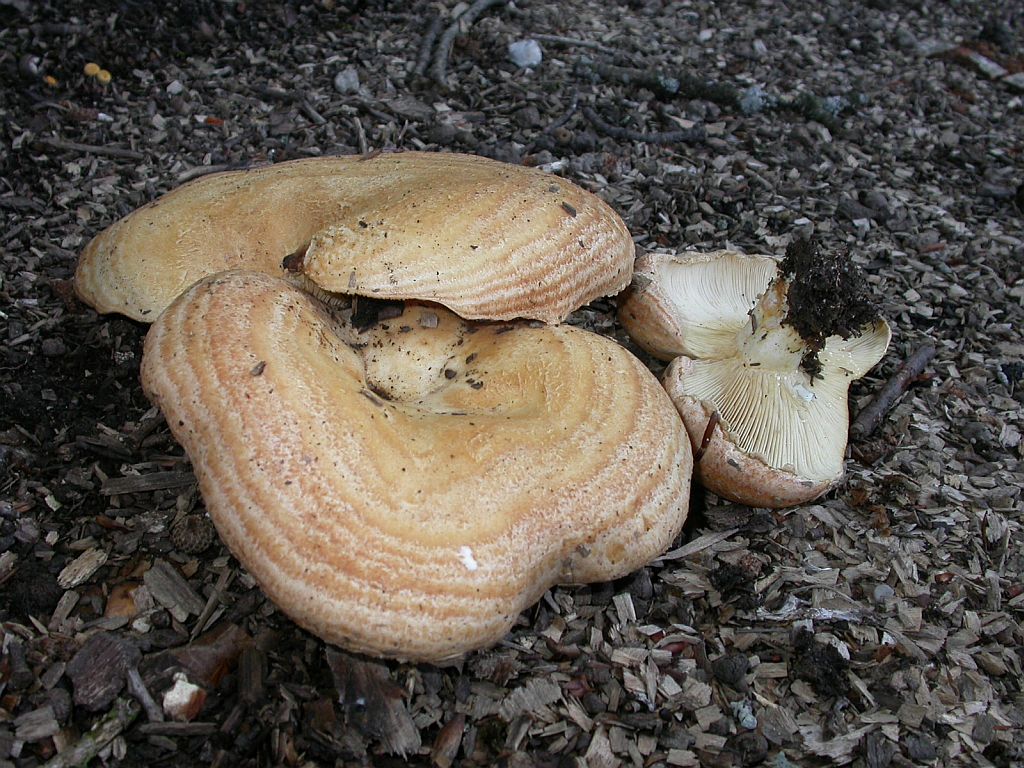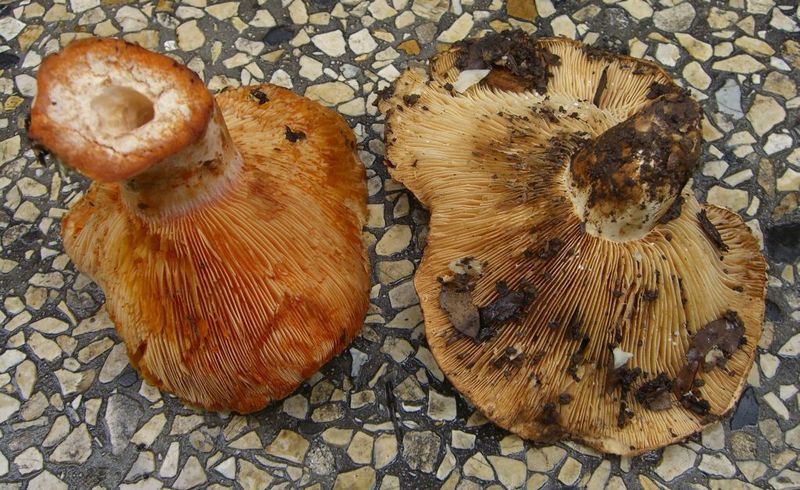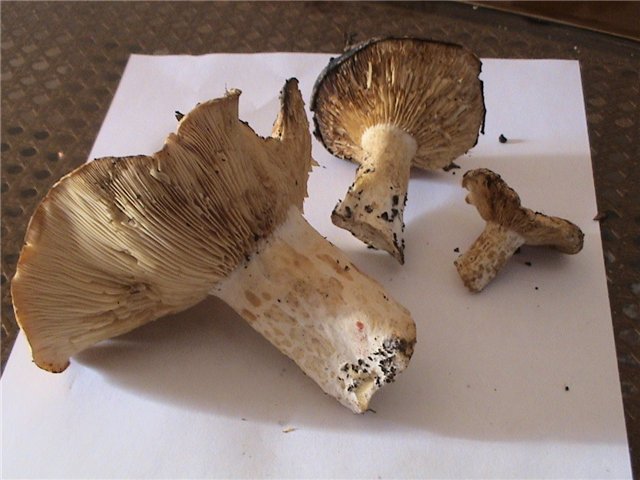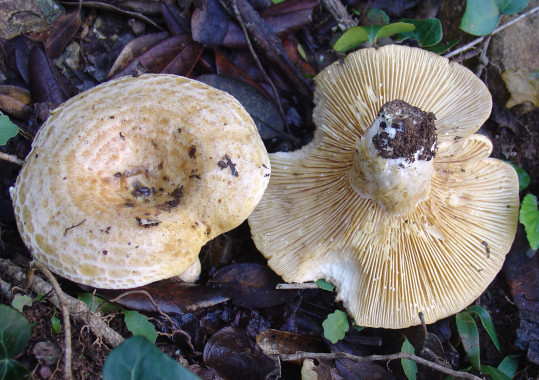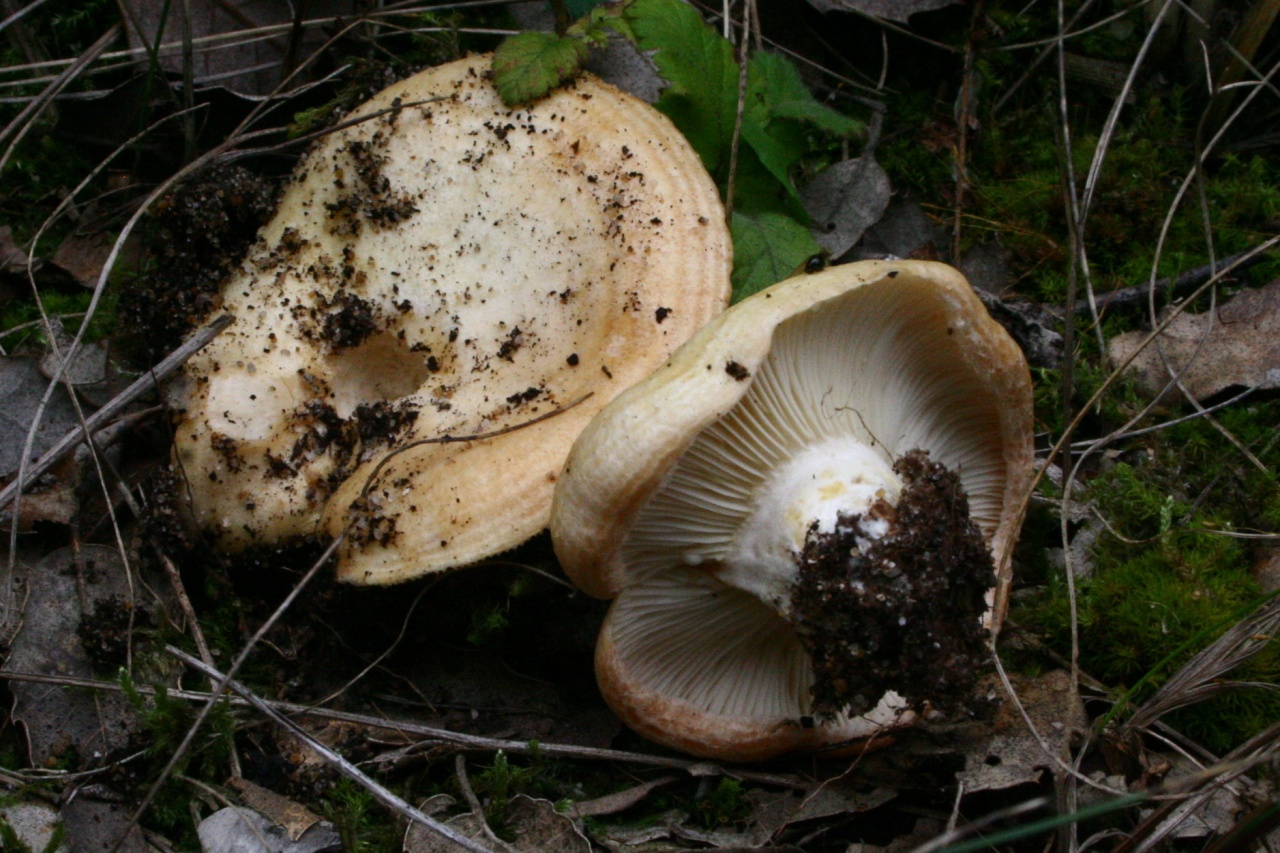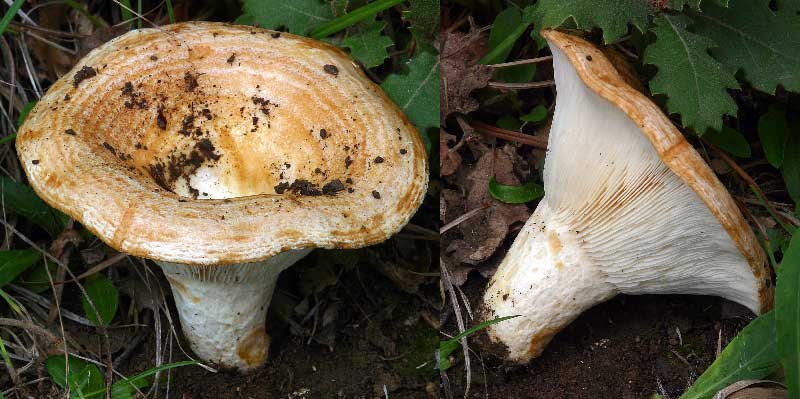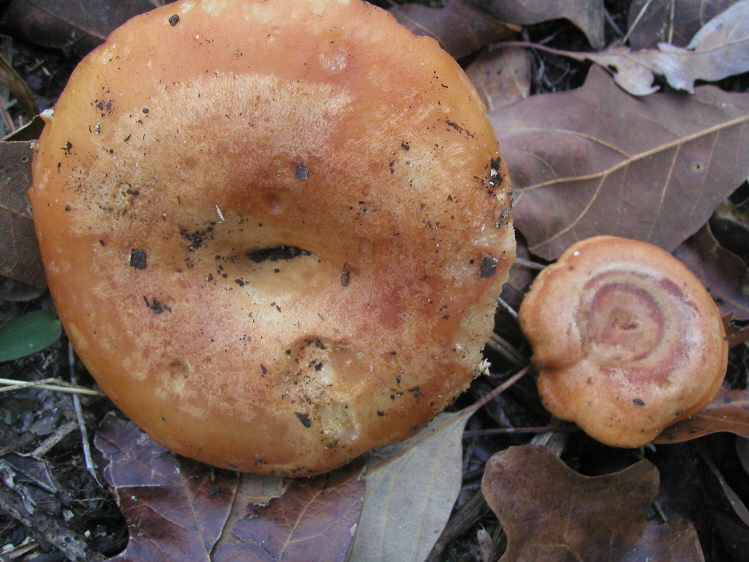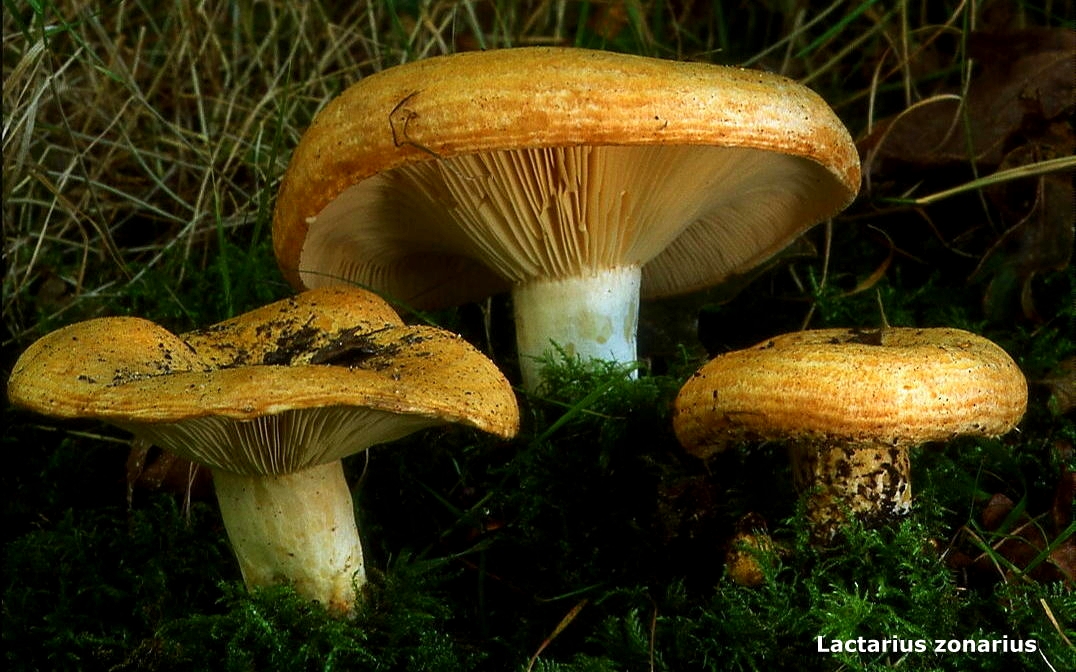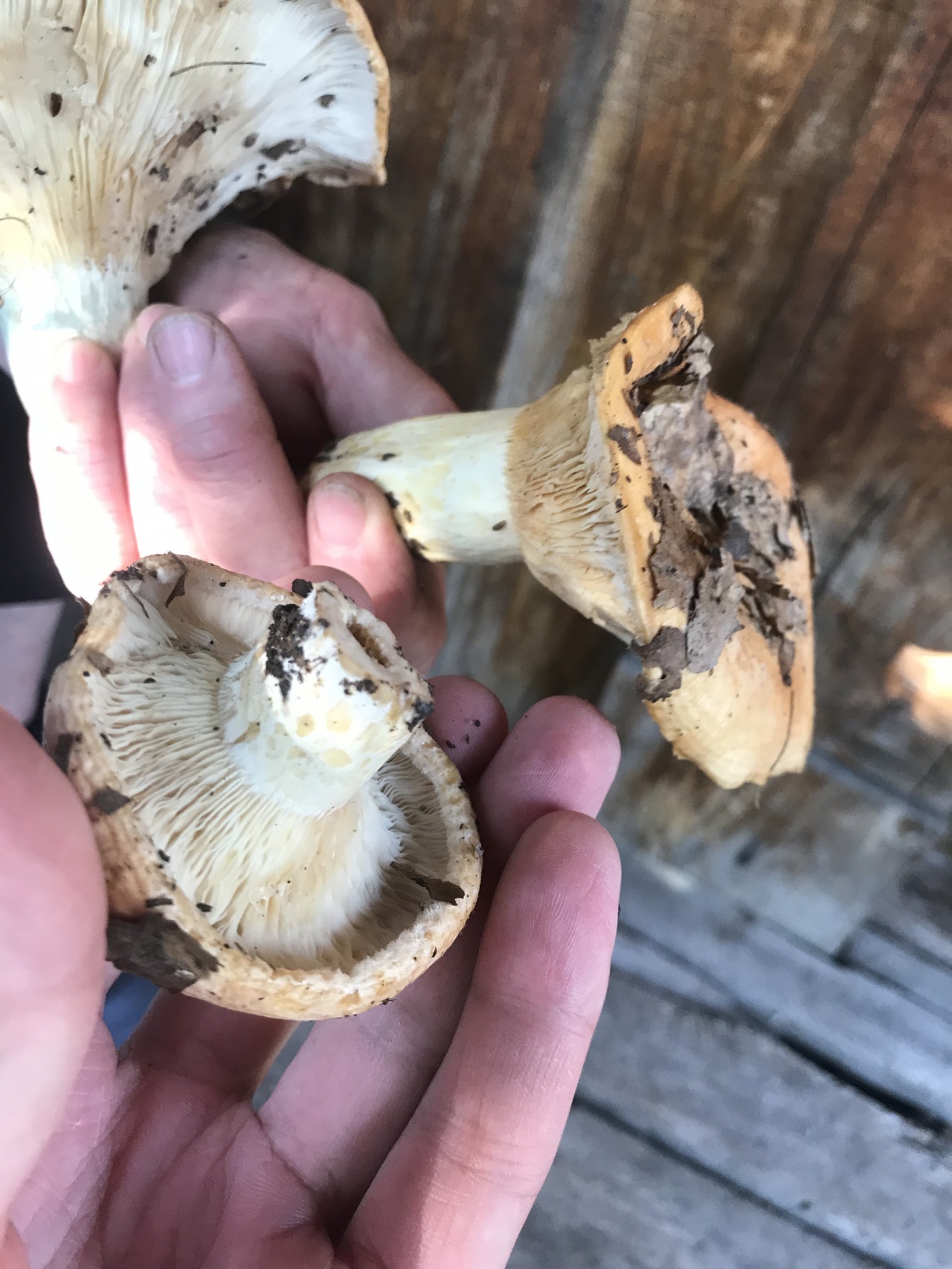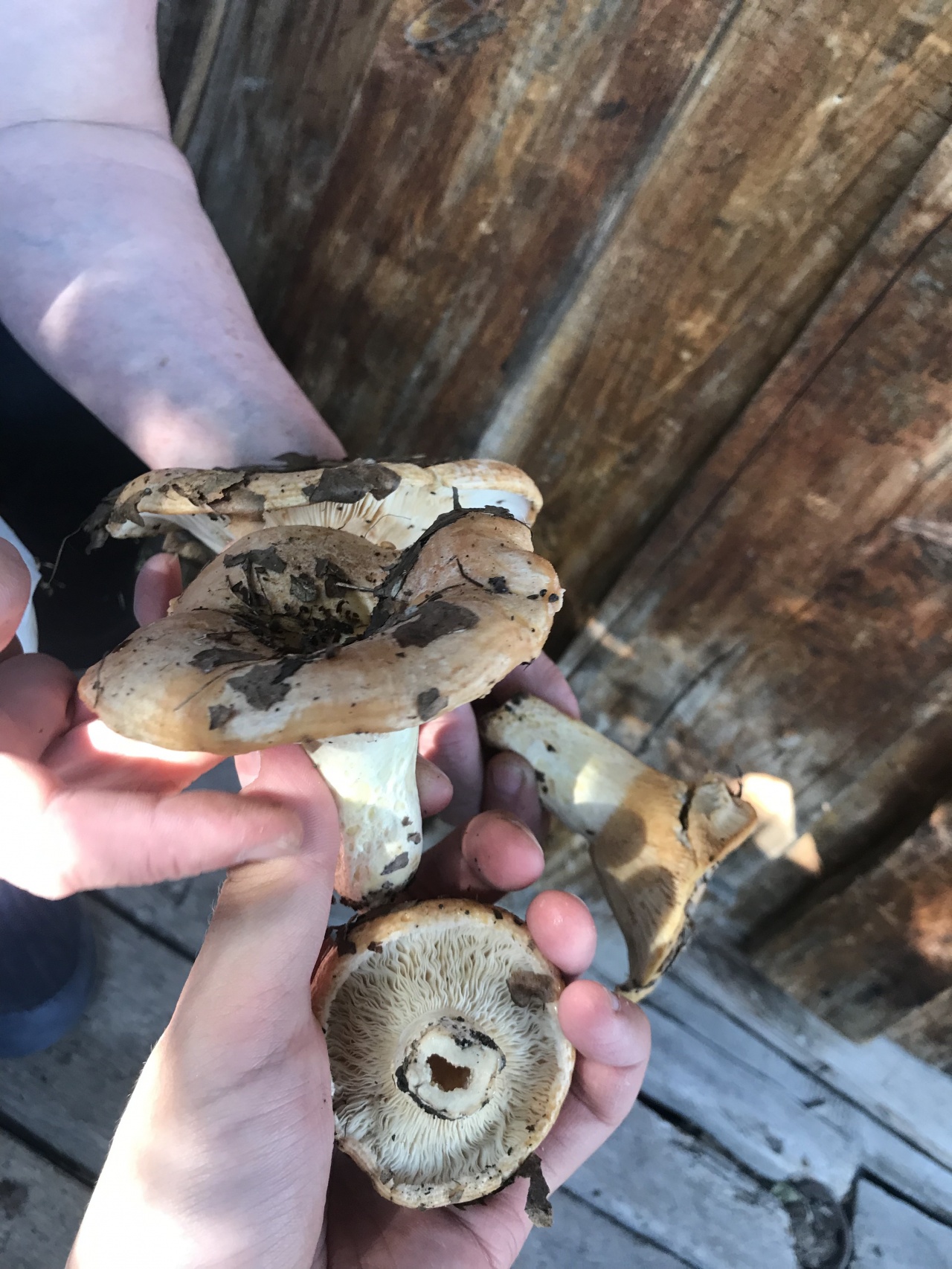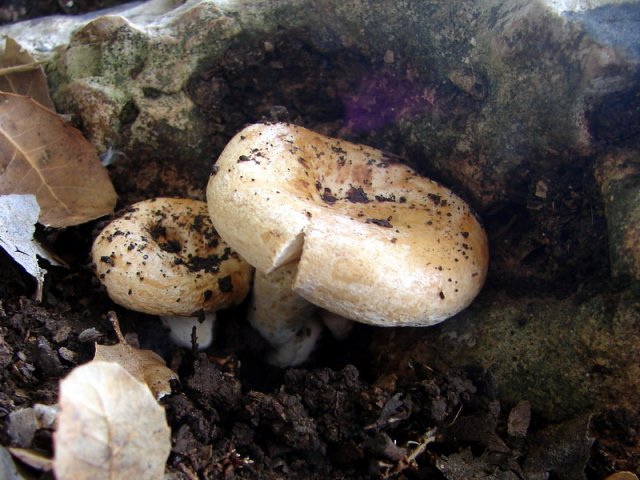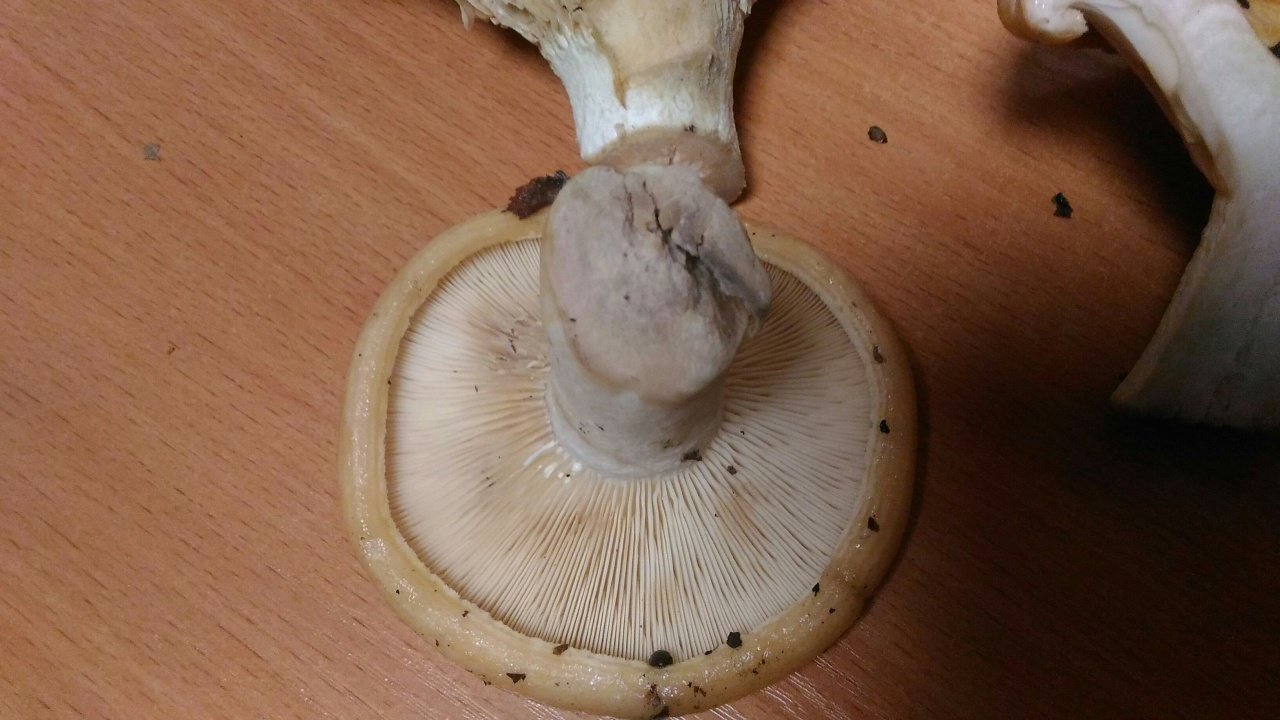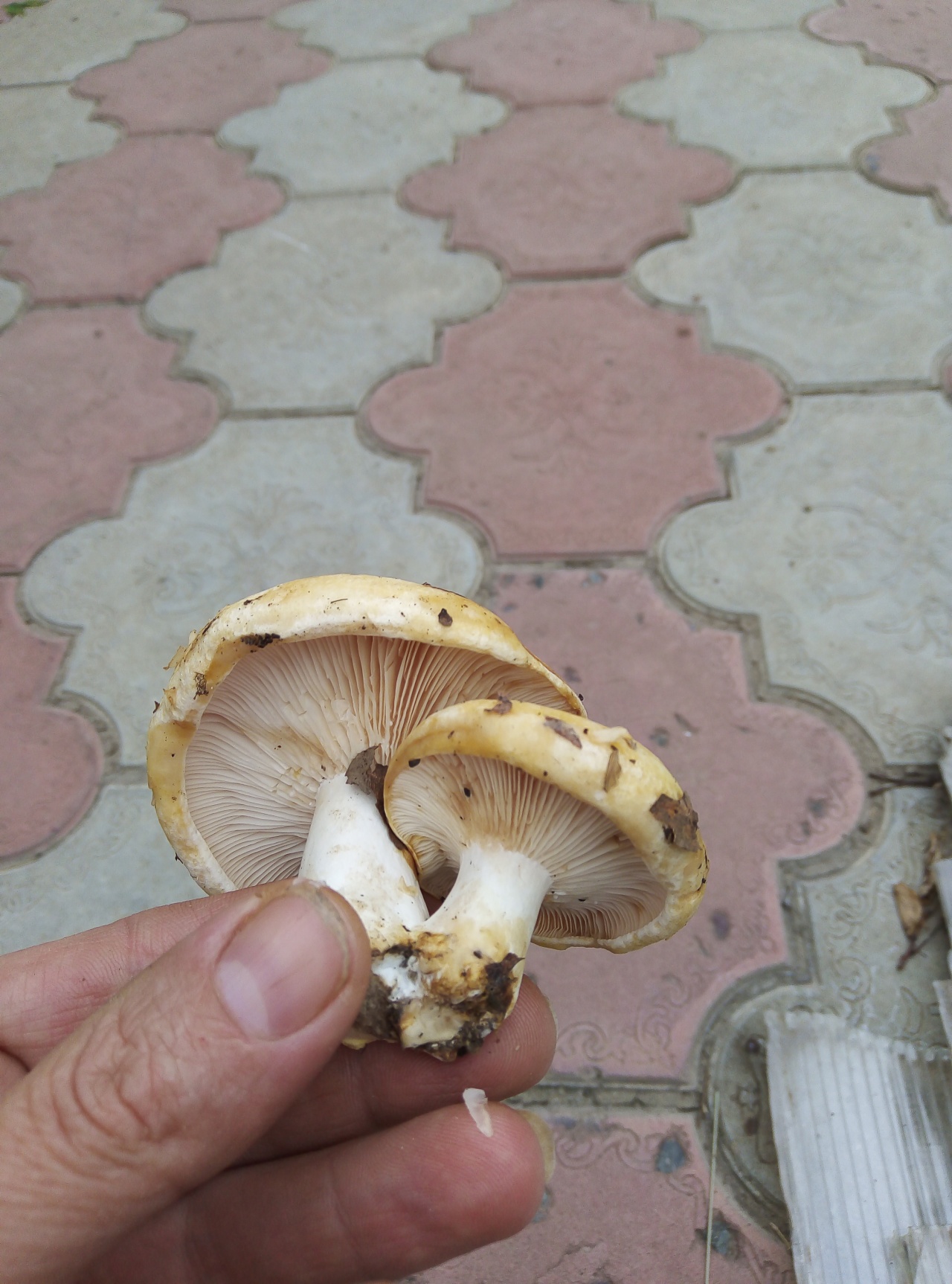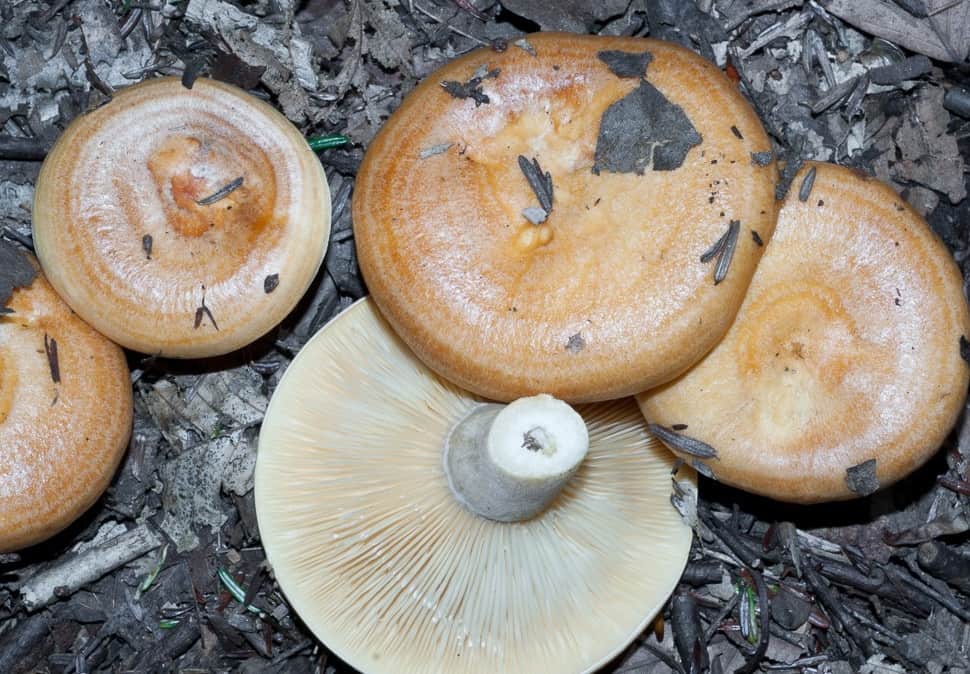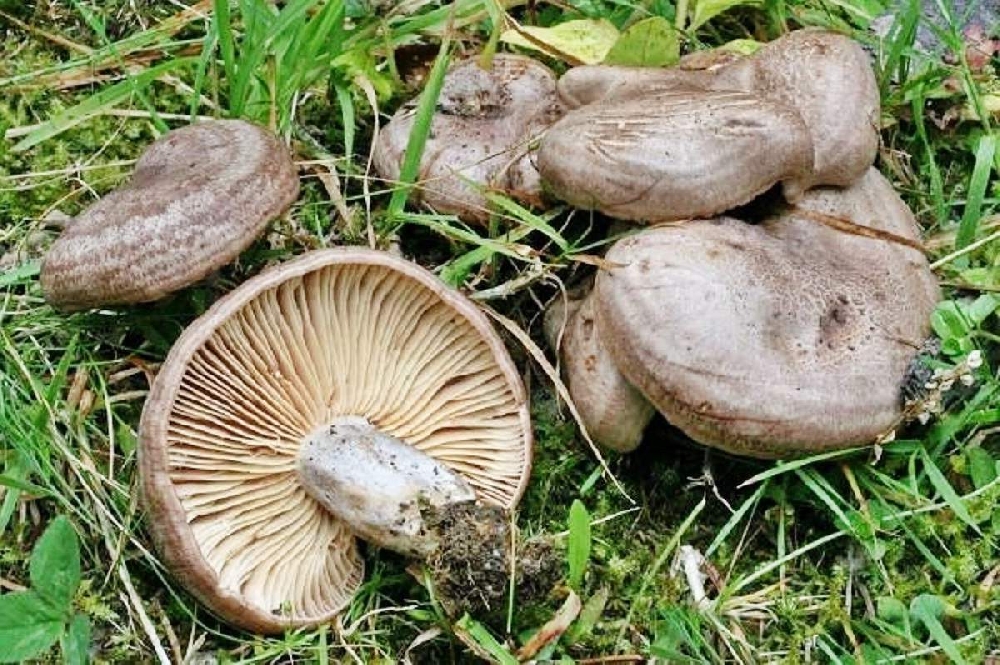Conditionally edible
There are slightly fewer conditionally edible varieties, and they are suitable for consumption only after special heat treatment. Depending on the variety, you need to either cook it for a long time, periodically changing the water, or simply soak it in clean water, squeeze it and cook.
The most popular conditionally edible varieties include (Figure 4):
- Milk is a variety with dense pulp, which is quite suitable for human consumption, although in Western countries, milk mushrooms are considered inedible. It is customary to soak them to remove bitterness, and then pickle and pickle.
- The green ryadovka (greenfinch) differs from others in the pronounced green color of the leg and cap, which remains even after heat treatment.
- Morels are conditionally edible specimens with an unusual cap shape and a thick leg. It is recommended to eat them only after thorough heat treatment.
Figure 4. Conditionally edible varieties: 1 - milk mushroom, 2 - greenfinch, 3 - morels
Some types of truffles, russula and fly agaric are also classified as conditionally edible.
But there is one important rule that you should adhere to when collecting any mushrooms, including conditionally edible ones: if you have even small doubts about edibility, it is better to leave the prey in the forest.
How to cook oak milky mushroom
The oak miller is suitable exclusively for salting, it is not used in any other form. These fruiting bodies require preliminary soaking:
- sort out mushrooms, clear of earth and litter;
- rinse, place the plates upwards in an enamel or glass dish;
- pour cold water, cover with an inverted lid or dish, put a jar or bottle of water as oppression;
- soak, changing the water twice a day, for at least 2-3 days.
At the end, drain the water, rinse the mushrooms. They are now ready for further cooking.
Cold salted oak miller
This recipe is universal for all edible lactarius species.
Required Ingredients:
- oak milkman - 2.4 kg;
- salt - 140 g;
- garlic - 10-20 cloves;
- horseradish, cherry or currant leaves (which are available) - 5-8 pcs.;
- dill stalks with umbrellas - 5 pcs.;
- a mixture of peppers to taste.
An appetizing snack that will delight all family members
Cooking method:
- Put the mushrooms in a wide enamel bowl on the leaves with the plates facing up.
- Sprinkle each layer 4-6 cm thick with salt and shift with leaves, garlic, spices.
- Finish with leaves, press down with an inverted lid, a wooden circle or a plate, put oppression on top so that the juice that comes out completely covers the contents.
After 6-8 days, mushrooms salted in this way can be transferred to jars and sealed with lids, putting them in a cool place for storage. After 35-40 days, a great snack will be ready.
Flabby, overgrown, or moldy specimens should not be eaten.
The inedibility of Bertillon's milkman
Like many members of the genus, Bertillon's milkman is classified as an inedible or conditionally poisonous mushroom. Its taste is pungent, so to eliminate it requires prolonged soaking of the mushrooms.
Ecology and habitat of the Miller Bertillon
These mushrooms are common in areas of Asia. They grow in deciduous forests. They form mycorrhiza with beech, sometimes they can grow under birches, chestnuts and oaks. They prefer humid flat areas. In mountainous regions, Bertillon's milkmen are practically not found.

Similar species
The violin is most similar to Bertillon's lactici. At first, this milkman was even considered the form of a violin. The fiddle has a bitter or tasteless taste, while the milkman Bertillon has a pungent taste. In addition, upon contact with the KOH solution, the juice of the violin does not turn yellow-orange, like Bertillon's.
Also, Bertillon's milkman can be confused with other types of milkers:
The pepperoni has a white cap that retains its color for a long time. There are depressions closer to the edge of the cap. The plates are narrow and very often spaced. The pulp slowly turns pale ocher in color when exposed to air. It tastes spicy. The milky juice of the peppercorn is fresh, when it gets on the pulp, it turns yellow. Upon contact with KOH, the milky juice does not color.
The bluish lump has a white cap. The edge of the cap does not unfold for a long time. Milky juice is white in color, and when it gets on the pulp or plates, then its shade becomes greenish. The pulp has a tangy taste. Upon contact with the KOH solution, the juice turns yellow-orange.

Aspen mushroom is found under an aspen, oak, willow or chestnut tree. The cap of this mushroom is white or grayish; a pink tint can often be seen. In the center, the cap may be ocher. The surface of the cap is slimy, and when it dries up, it becomes velvety. Concentric zones are visible to the edges of the cap. The plates are pink. On contact with KOH, the milky juice turns yellow.
Cooking information
It is recommended to collect only young specimens, the cap of which has not yet had time to take a conical shape. Drying these milkmen is not recommended, the unpleasant smell will only become stronger, and therefore they are more often salted and pickled.
First, you should soak them for 1-2 days, periodically changing the water. Then it is boiled for 30 minutes, the broth is drained. If the smell persists, you can boil for another 20 minutes.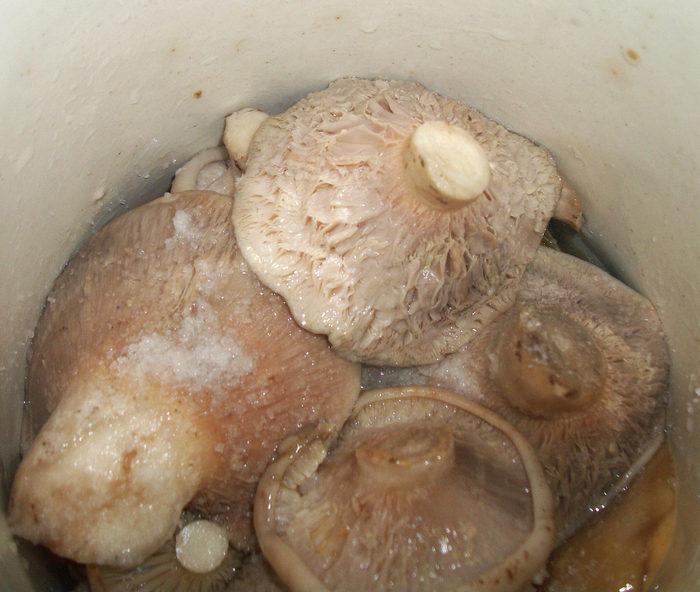
For salting, after all the preparations, the mushrooms are placed in a prepared container, on the bottom of which dill is laid, each layer of the milkmen is sprinkled with salt. Then you can, if you wish, put:
- finely chopped garlic;
- Dill;
- laurel;
- cloves;
- allspice.
There are cooks who use only mushrooms and salt for pickling. The amount of additional ingredients is regulated by each according to his taste. After that:
- Cover the millers with clean gauze folded in several layers.
- Press down everything with a wide plate.
- Place a heavy load on top.
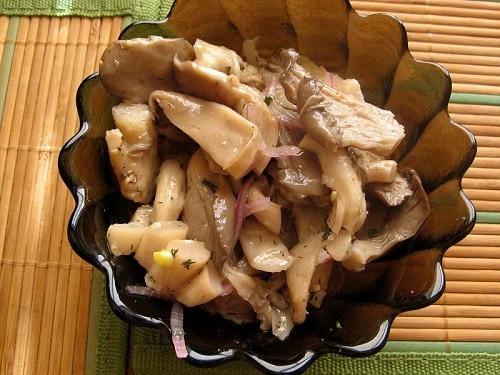 In addition, from time to time, you should rinse the gauze so that the fruits do not sour. After 40 days, the salted milkers are ready, you can put them in jars and refrigerate.
In addition, from time to time, you should rinse the gauze so that the fruits do not sour. After 40 days, the salted milkers are ready, you can put them in jars and refrigerate.
The gray-pink mushroom is good and pickled. Pretreatment is no different, but the final boil should be done in salted water. Then the marinade is prepared, for 1 liter of water you will need:
- 1 tbsp. l. salt and sugar;
- 70 ml vinegar;
- 2 laurel leaves;
- 3 carnations;
- 3 cloves of garlic;
- 5 peas of allspice;
- dill umbrella;
- 1 tsp mustard seeds;
- canteen horseradish leaf.
All components are combined with water and brought to a boil, then the following is done:
- Mushrooms are dipped into a saucepan and continue to cook for another 30 minutes.
- After that, you need to transfer the fruits to prepared jars, pour the marinade.
- If you need to keep it for a long time, then sterilization will follow for half an hour, then rolled up and removed to cool in a blanket.
If you eat right away, then just cool and put in the refrigerator.



